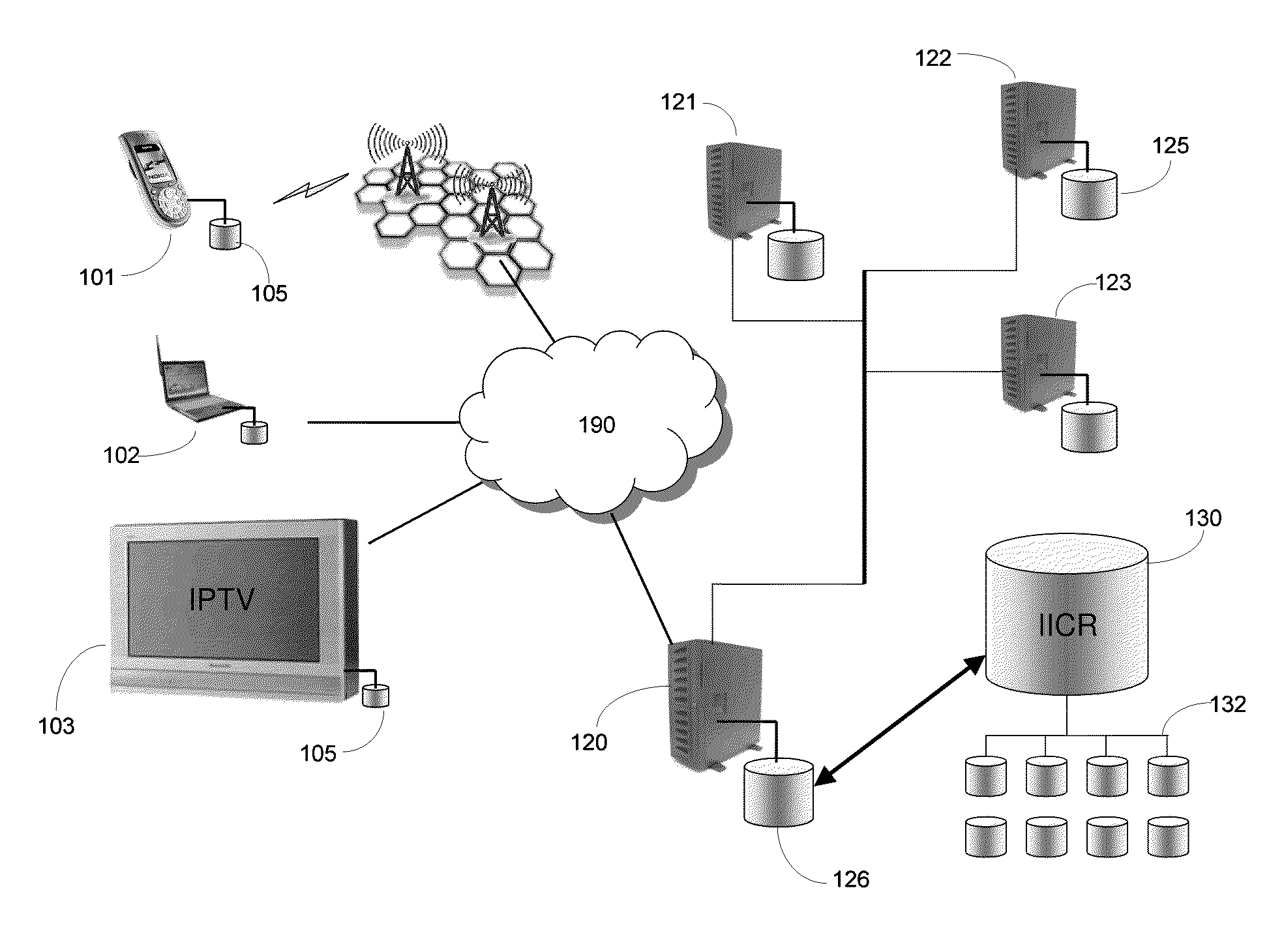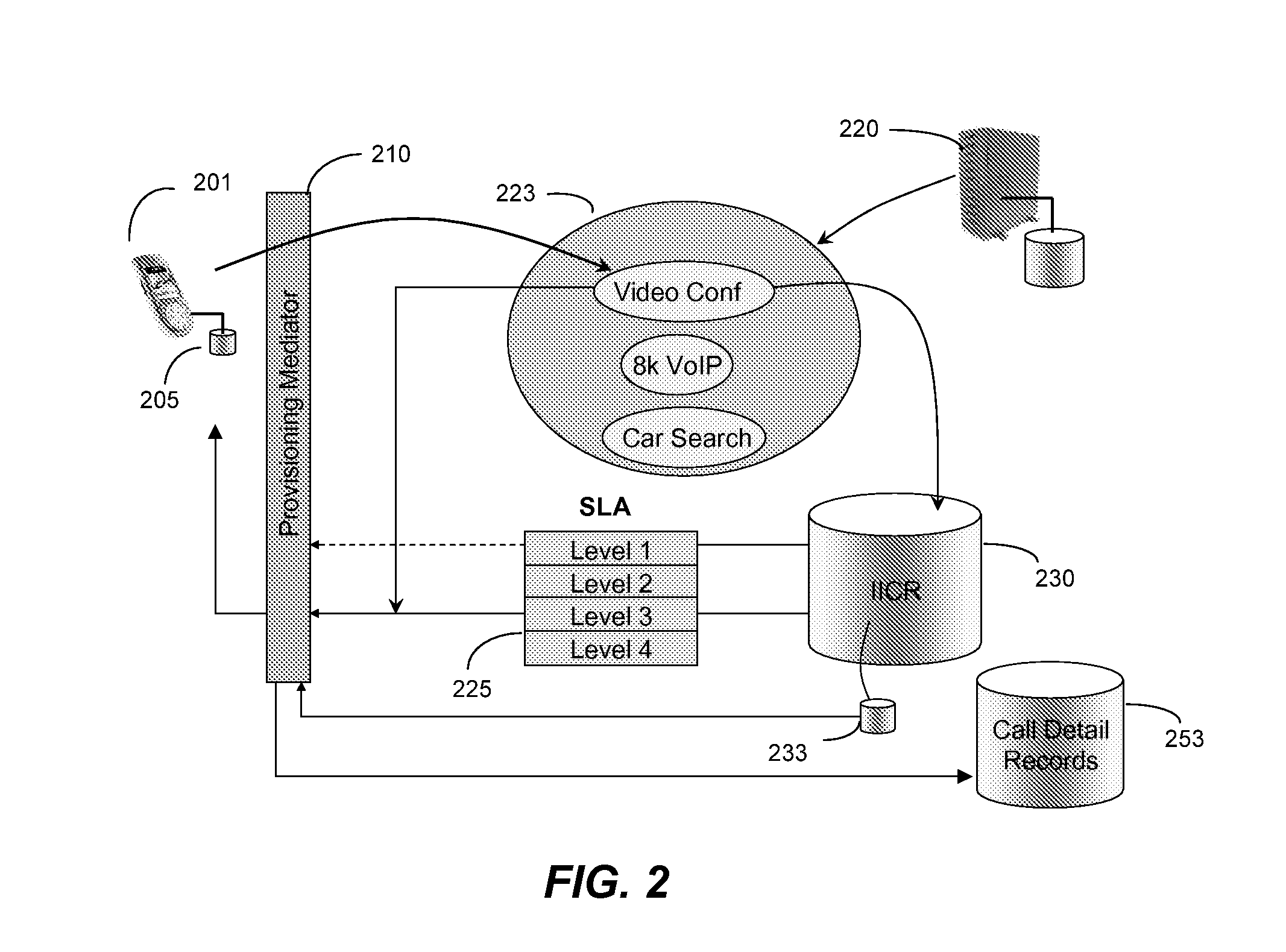Intelligent charging for services
a service and intelligent technology, applied in the field of intelligent charging for services, can solve the problems of subscribers rarely directly benefiting from this information collection, network operators tend to lose focus on the needs or demands of subscribers, and subscribers are still limited in their ability and flexibility to launch applications and services, so as to effectively manage the usage data of subscribers
- Summary
- Abstract
- Description
- Claims
- Application Information
AI Technical Summary
Benefits of technology
Problems solved by technology
Method used
Image
Examples
Embodiment Construction
[0016]The present invention discloses systems and methods for intelligent provisioning and charging for services offered to a subscriber on a network. A logic unit on the network acts as an arbitrator or “service controller” between a subscriber's device and services on the network. The service controller aggregates information about a subscriber's usage of a service or an application, and stores the information in a plurality of databases. This information may include details regarding the content accessed by the subscriber, communications made by the subscriber, and billing information for the services used by the subscriber. The service controller is also in communication with an Intelligent Information Collection Repository (IICR). The IICR stores the aggregated usage history along with subscriber demographics and other information in a subscriber profile. Since the IICR contains consolidated profiles for multiple subscribers on the network, the IICR may also form “segment” prof...
PUM
 Login to View More
Login to View More Abstract
Description
Claims
Application Information
 Login to View More
Login to View More - R&D
- Intellectual Property
- Life Sciences
- Materials
- Tech Scout
- Unparalleled Data Quality
- Higher Quality Content
- 60% Fewer Hallucinations
Browse by: Latest US Patents, China's latest patents, Technical Efficacy Thesaurus, Application Domain, Technology Topic, Popular Technical Reports.
© 2025 PatSnap. All rights reserved.Legal|Privacy policy|Modern Slavery Act Transparency Statement|Sitemap|About US| Contact US: help@patsnap.com



